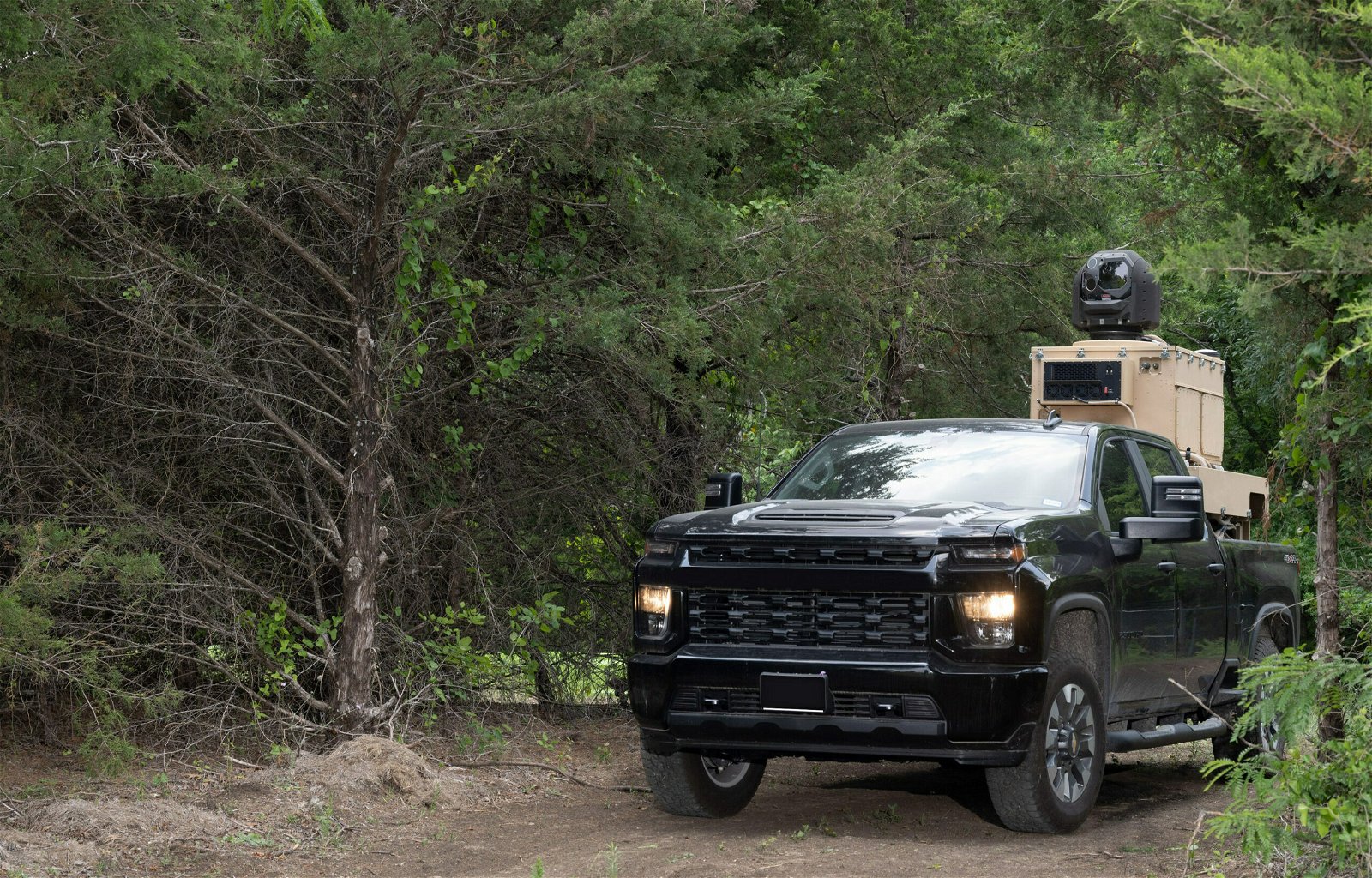Military contractor Raytheon Technologies has announced the delivery of a fully portable, combat-ready laser to the United States Air Force. This marks the fourth such delivery by Raytheon to the Air Force, with the latest laser said to be fully portable and immediately ready for deployment.
“The new palletized laser weapon was the first 10-kilowatt laser built to U.S. military specifications in a stand-alone configuration that can be moved and mounted anywhere it’s needed,” explains a press release sent out by the company.
Known internally as “H4,” the combat-ready laser is not only the fourth such weapon delivered by Raytheon to the Air Force but is the eighth overall such weapon that Raytheon has delivered to the U.S. Department of Defense (DOD).
The Debrief has previously covered a number of similar combat laser weapons under development, including the company’s High Energy Laser Weapons System (HELWS) as well an entry from Lochheed-Martin dubbed the most powerful combat laser ever built. But this newest combat laser is the first to boast a readiness for immediate deployment alongside unprecedented portability. This means it can be attached to a wide range of vehicles used in combat situations and put into real-world combat use right away.
Such versatility and readiness are significant since the 21st-century battlefield is continually changing with all kinds of new threats. Of course, the new laser, which is rated at 10 kW, isn’t the most powerful, but it is well-suited to protect forward forces against asymmetrical attacks primarily from the rapidly expanding use of low-cost drones.
“Anywhere the Air Force sees a threat from drones, they now have four proven laser weapons that can be deployed to stop asymmetrical threats,” said Michael Hofle, senior director of High-Energy Lasers at Raytheon Technologies. “Whether it’s on a fixed location, a flatbed, or even a pickup, these laser weapons are compact, rugged, and ready to go.”
“We’re proud to support the Air Force’s effort to provide this new tech to the personnel who need it in the field,” added Hofle, “who can trust and be confident in the system’s capabilities.”
The press release also points out that the new laser weapon system “comprises a high-energy laser weapon module, a long-range EO/IR sensor that also serves as the beam director, thermal control, internal electrical power, and targeting software.”
That same release notes that the laser system can be operated with a laptop and a video game-style controller and “can plug into a long list of existing air defense and command and control systems to provide a needed layer of defense.”
The DOD is increasingly looking at combat lasers and other directed energy weapons like the microwave system known simply as “Thor’s Hammer” to address a number of emerging threats. The more powerful combat laser weapons under development range anywhere from 100 kW to 300 kW and are potentially capable of downing incoming missiles and possibly even enemy aircraft. But the most common threat posed to forces is the ever-expanding use of drones, simply because of their low cost and ease of use.
There is also an inherent cost benefit to using lasers over conventional munitions, which is the only current option for downing incoming aerial threats, as their ammunition is simply light and, therefore, significantly cheaper than conventional ammunition.
This cost-benefit was highlighted by the Israeli Ministry of Defense, which has deployed a laser system known as Iron Beam to complement its Iron Dome system that uses conventional rockets to down enemy drones, mortars, and missiles.
“This is the world’s first energy-based weapons system that uses a laser to shoot down incoming UAVs, rockets & mortars at a cost of $3.50 per shot,” read a tweet by Israeli Prime Minister Naftali Bennet. Compared to the cost of an Iron Dome rocket, which some estimates say can cost as much as $150,000 a shot, the benefits of using lasers in combat are readily apparent.
Israel has successfully tested the new “Iron Beam” laser interception system.
This is the world’s first energy-based weapons system that uses a laser to shoot down incoming UAVs, rockets & mortars at a cost of $3.50 per shot.
It may sound like science fiction, but it’s real. pic.twitter.com/nRXFoYTjIU
— Naftali Bennett בנט (@naftalibennett) April 14, 2022
The announcement from Raytheon and the Air Force does not give a specific timeline for deployment of the H4, but based on the weapon’s portability and combat-ready status, it is likely to see action almost immediately.
Christopher Plain is a Science Fiction and Fantasy novelist and Head Science Writer at The Debrief. Follow and connect with him on Twitter, learn about his books at plainfiction.com, or email him directly at christopher@thedebrief.org.

